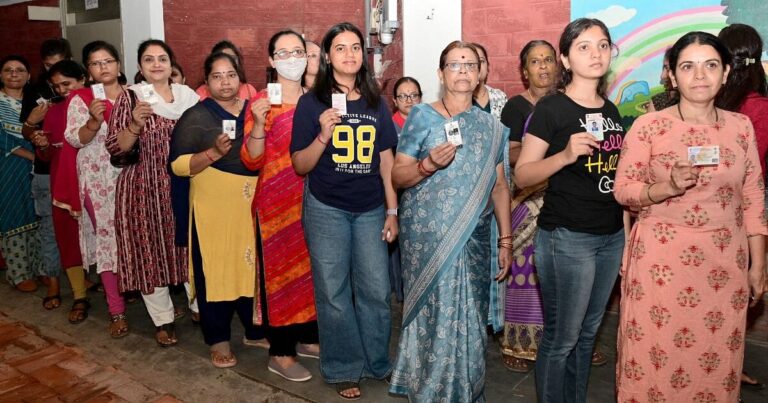BENGALURU: With three days to go until the results of India’s Lok Sabha elections are announced, political parties and experts are still trying to make sense of a puzzling data point: women outnumbered men in 70 constituencies in the two-phase elections in Karnataka state.
These 70 Assembly segments are spread across 22 Lok Sabha seats.
Five years ago, women voted more than men in just 22 constituencies across nine Lok Sabha divisions.
According to voter turnout data analysed by DH, 2.118 million more women voted in Karnataka this time compared to 2019.
Breaking down the numbers, more insights emerged: In 61 Assembly constituencies in southern Karnataka, women voted more than men. In the north, there were nine constituencies where women led the vote. All 22 Assembly constituencies in 2019 where women voted more than men were in southern Karnataka.
Overall, the number of women who voted increased by 12% compared to 2019.
In North Karnataka, in 2019, there was not a single assembly in which women voted more than men. But this time, women voted more than men in nine assemblies.
In the 2019 elections, only Bhadravati and Bindur assembly seats in Shimoga assembly constituency saw women voter turnout exceed that of men. This time, women have performed well in four assembly seats.
In Uttara Kannada, unlike the three assemblies this time, only Bhatkal was elected in 2019. In Dakshina Kannada, women voted more than men in all eight assemblies in both the elections.
But who won the women’s vote?
The BJP sees this as good news as the party is trying to woo women voters with its “guarantee” scheme. Karnataka is the first state where the BJP has put its “guarantee” model into practice.
“Women voted for the Communist Party.”
“Generally, women will vote for Congress as they are the biggest beneficiaries of the guarantee,” said Priyank Kharge, IT/BT minister and government spokesperson.
“In my constituency (Chittapur), women voted for the Congress with or without a man in their family. It seems more women voted for us because we have brought economic stability to their homes.”
The BJP believes that reservation of 33 per cent seats in the Lok Sabha and Parliament, free housing and Ujjwala scheme are the reasons why women voted for Prime Minister Narendra Modi.
Also, the Rama temple has an emotional connection with women.
“The BJP has been working on garnering support from women for a long time,” said V. Sunil Kumar, general secretary of the party, who ran its Lok Sabha election campaign.
“Our party has been at the forefront of pro-women programmes ever since it first came to power in Karnataka in 2006. Apart from this, the party’s door-to-door campaigns have enabled more women to turn out to vote this time.”
Political analyst Sandeep Shastri says women generally vote based on their family’s economic security and well-being.
“All we can say at this point is that the women voter turnout was higher. If you ask which party got more votes, it will be difficult for anyone to answer,” Shastri said.
“Both the parties have announced ‘guarantees’ aimed at winning women’s support. The results will be known only on June 4.”
Published May 30, 2024 23:43 IST

